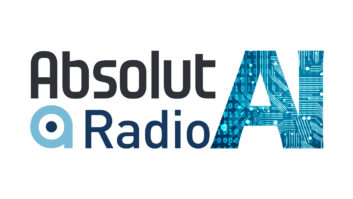We’re Still There When You Need Us
I was aghast at an interview I saw with a New York area resident, a young 20-something guy, about the abysmal storm recovery response there. Toward the end of the interview, this guy blurts out, “We’re getting no information at all here!”
Wow! What a lack of knowledge about the world around him. Consider: The New York area is the number one radio market in the United States. New York City has three 50,000-watt radio stations, whose signals blanket the area. Their signals are so strong, I can receive them here in Ohio at night: WOR(AM), WABC(AM) and WCBS(AM).
All three of these talk stations provided information during Hurricane Sandy. However, they also are all on the AM band.
Sadly, this young man and his friends don’t seem to have heard of, much less bothered to listen to, any of these stations. Because who listens to AM radio anymore?
Welcome to the “new normal,” broadcasters! You’ve been listening to people like me, who’ve been in the business for about 40 years, telling you about a whole new generation of Americans who think radio is totally irrelevant and not something to include as part of their lives. Here he is … and consider it a slap in your faces.
This shows, in Day-Glo orange, that my industry is doing a terrible job of getting the word out about what they do and how radio can affect and improve their lives.
It might not be a bad idea for FM stations during during a major storm to say, “Tonight is election night and our sister station X on the AM frequency is providing complete election returns right now, so tune in.” Or, “For complete storm updates, tune to X on the AM dial.”
Don’t complain to me about Clear Channel, Entercom, Cumulus, Cox, voice-tracking and all the other excuses that allow you to complain and whine that radio is no longer “live and local” 24/7/365. Facts are, most all areas of the country have at least one station that goes “live and local” when these emergencies happen, for as long as needed until the emergency has passed. In some cases, they’re FM music stations. In others, you’ll have to flip the switch from “FM” to “AM.”
Radio has now been around for just shy of 100 years. And today, you don’t even have to have batteries for one. There are “emergency radios” that cost anywhere from $19.95 to $39.95. These can operate in any situation. And many will receive AM/FM and, in some cases, police band and shortwave. They’re environmentally friendly.
With the exception of a few small daytime-only stations, the vast majority of radio stations now all operate 24/7/365.
Yes, listeners, you have to put up with some commercials. But that’s the price you pay, other than the cost of the radio itself, for the information you’re getting around the clock.
So unplug from your iPod or iPhone and rediscover that ancient “old technology” of radio. We’re still there when you need us.
Kevin Fodor
News Anchor, Programming Assistant
Cox Media Group
Dayton, Ohio
‘High Tech’ Often Fails in Crises
In his Nov. 19 column, “Sandy Highlighted Radio’s Enduring Power,” Paul McLane wrote, “Radio received many such reviews (though sometime with a condescending subtext: ‘Not bad for an otherwise outdated technology’).”
This reminds me of the comment made by a Motorola rep just after Katrina. With 35 percent of the cell and public service systems down, amateur radio operators stepped in to help with communications. It was a good demonstration of how ham radio can help, and also how fragile our cell/public service infrastructure is.
At a post-Katrina press conference, the FEMA director praised the hams, which led to the quote by the Motorola rep: “Their efforts were better than nothing, and ham radio is as close to nothing as one can get.”
As a communications officer/deputy in our county, and co-chairman of our EAS district, I’m concerned about how our so-called high-tech infrastructure holds up under these emergencies. It seems that the more complex it is, the more the chance for failure.
I’ve seen our communications go down several times, and in those times, conditions were nowhere near the level of Katrina or Sandy.
On another note, here in the Midwest, we have a lot of big, corporate stations operating, mostly unattended. This past June, when we had our big windstorm, our TV station was on a full hour and a half before it hit Lima, Ohio, warning of the storm. Up to 10 minutes after the storm, the radio stations were still playing “more music,” and one cluster vanished from the radio dials.
As a curmudgeon of the old days of public service, I really hate to see radio degraded like this. In bigger towns — Cleveland, Dayton, Columbus — they were on top of it. But markets 100+ in Ohio and Indiana suffered from the “station running on automation syndrome.”
Frederick R. Vobbe
Director of Engineering
Block Communications Inc.
Lima, Ohio












